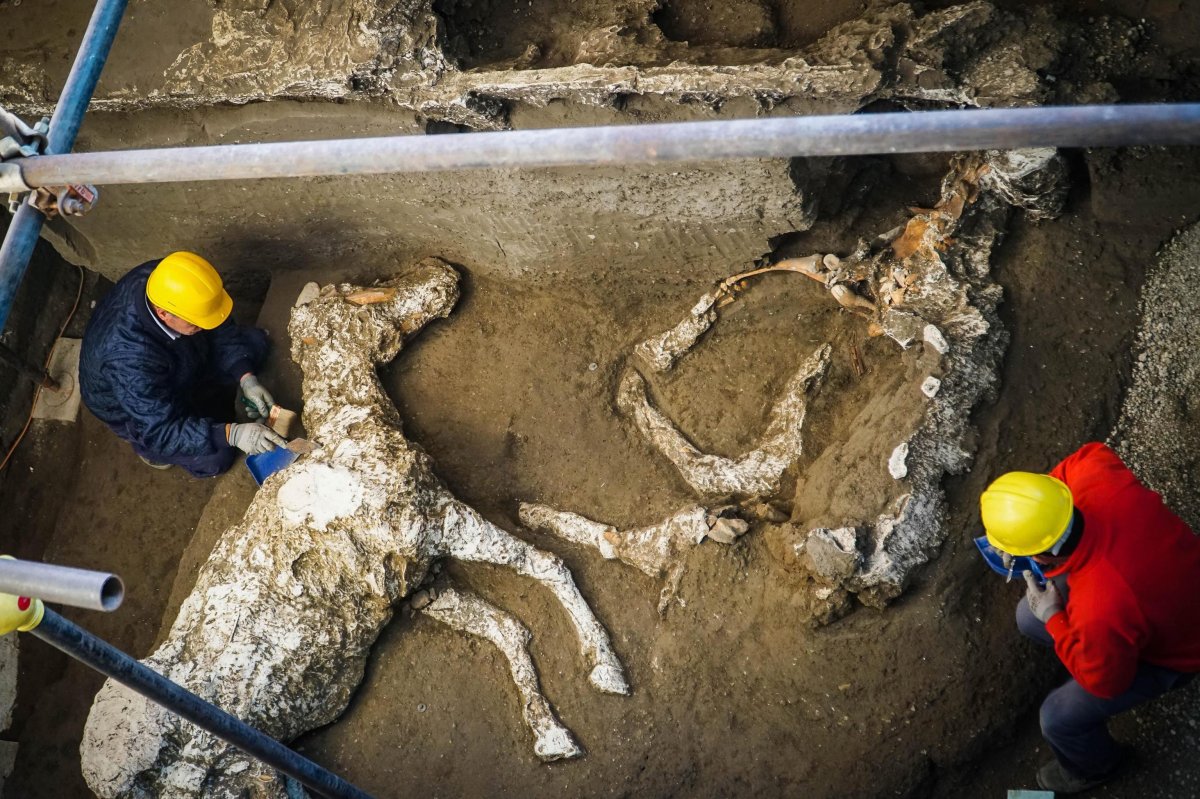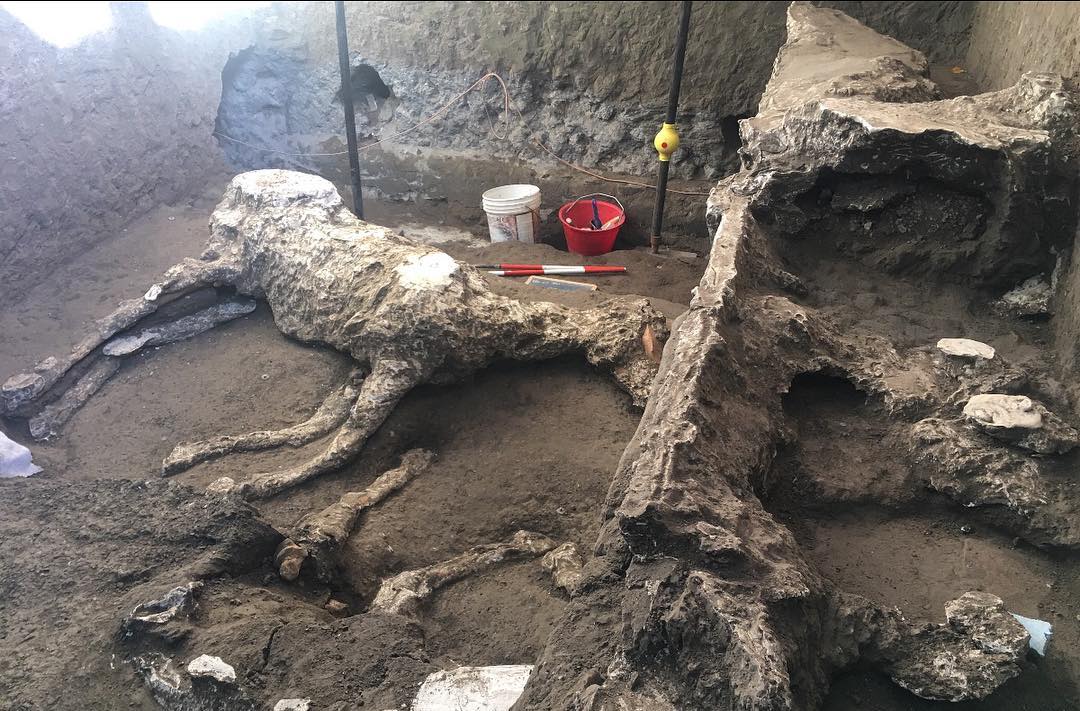An archaeologist inspects the remains of a horse skeleton in the Pompeii archaeological site, Italy, Sunday, Dec. 23, 2018. A tall horse, well-groomed with the saddle and the richly decorated bronze trimmings, believed to have belonged to an high rank military magistrate has been recently discovered, Professor Massimo Osanna, director of the Pompeii archeological site said to the Italian news agency ANSA. (Cesare Abbate/ANSA Via AP).

Archaeologists have unearthed the petrified remains of a harnessed horse and saddle in the stable of an ancient villa in a Pompeii suburb.
Pompeii archaeological park head Massimo Osanna told Italian news agency ANSA that the villa belonged to a high-ranking military officer, perhaps a general, during ancient Roman times.

Osanna was quoted on Sunday as saying the remains of two or three other horses were also discovered.

The villa’s terraces had views of the Bay of Naples and Capri island. The area was previously excavated, during the early 1900s, but later re-buried.
The volcanic eruption of Mount Vesuvius destroyed flourishing Pompeii, near present-day Naples, in 79 A.D.
Osanna says suffocating volcanic ash or boiling vapours killed the horses. He hopes the villa eventually will be open for public visits.

